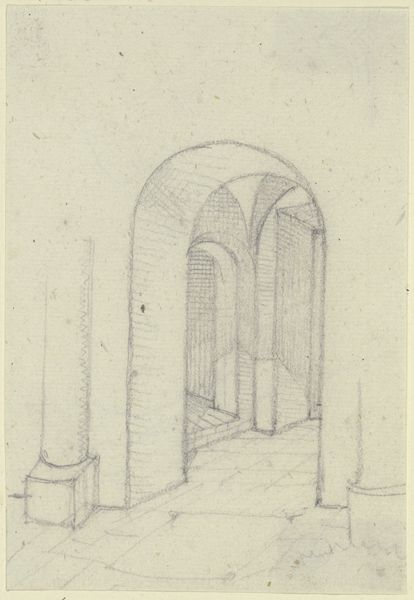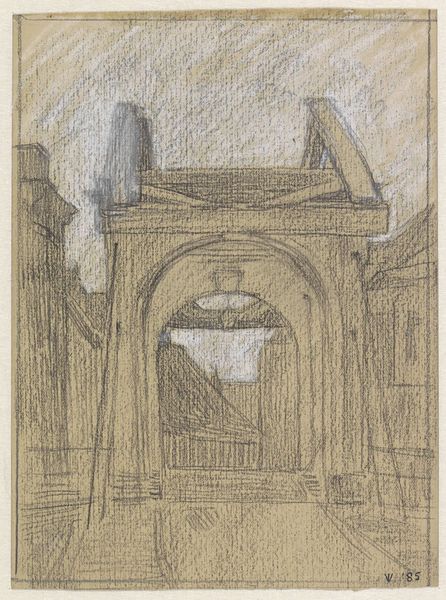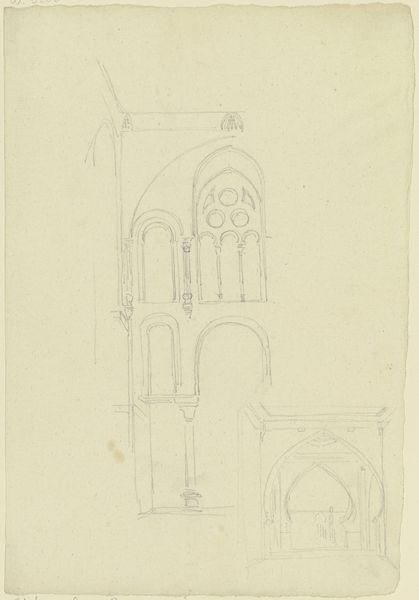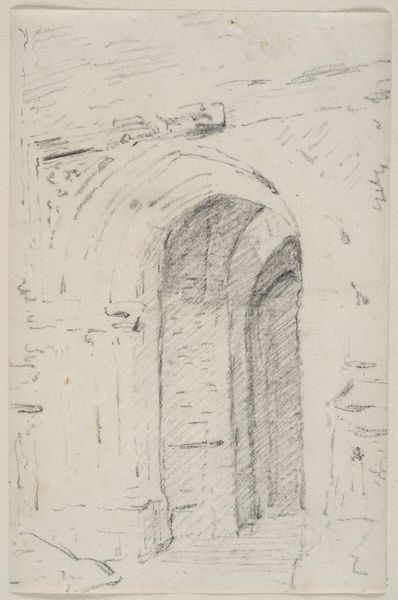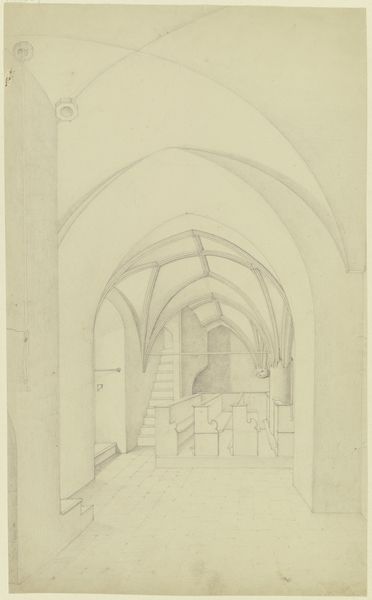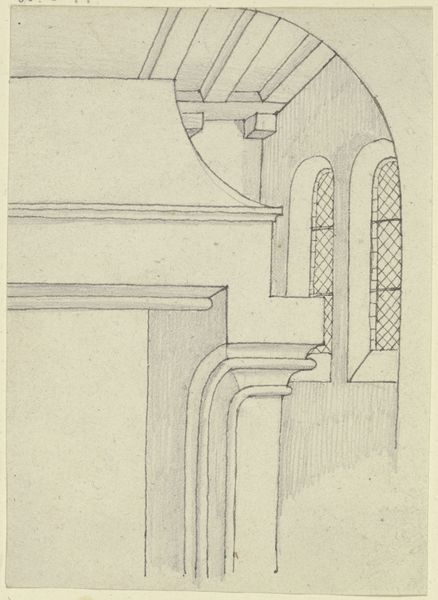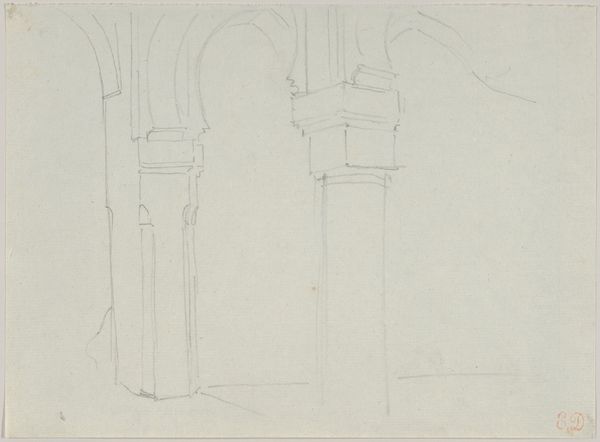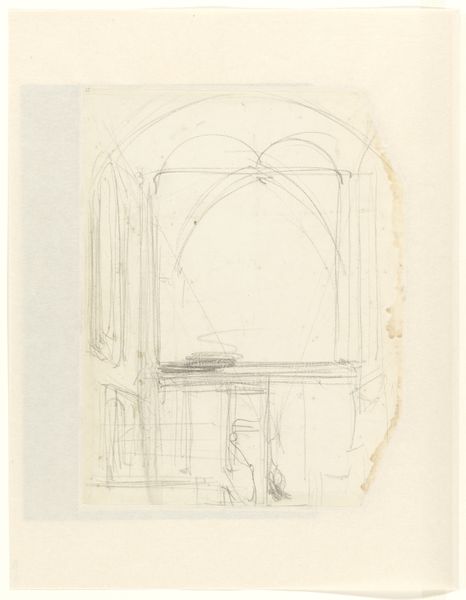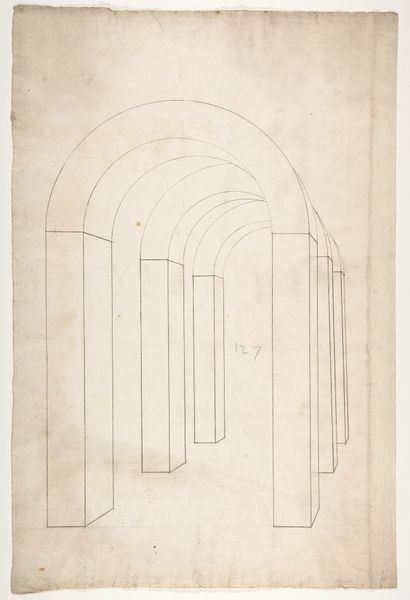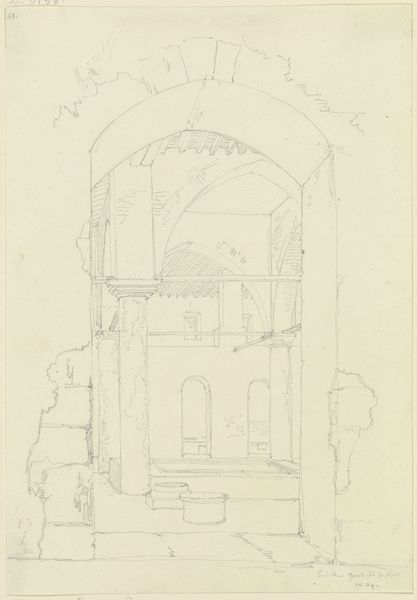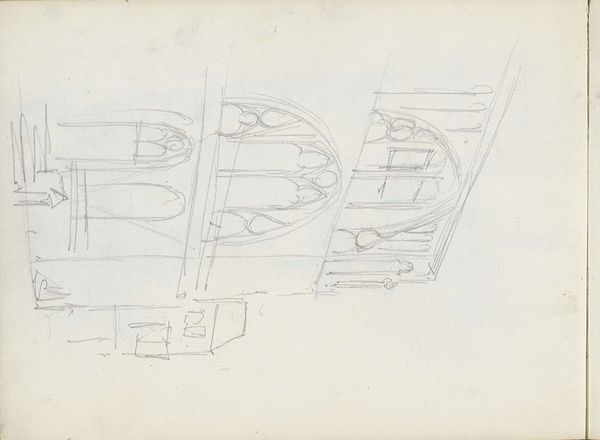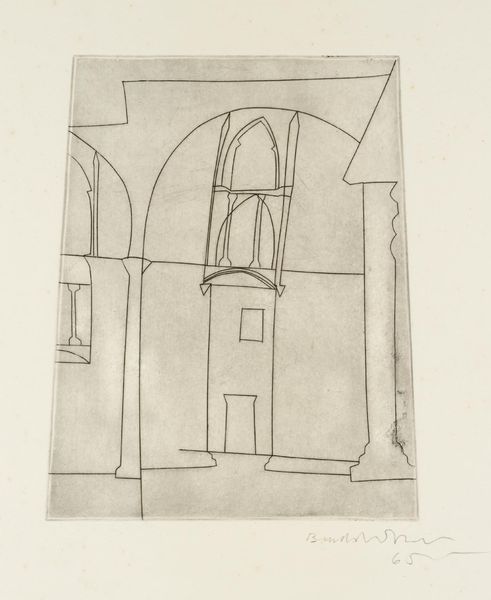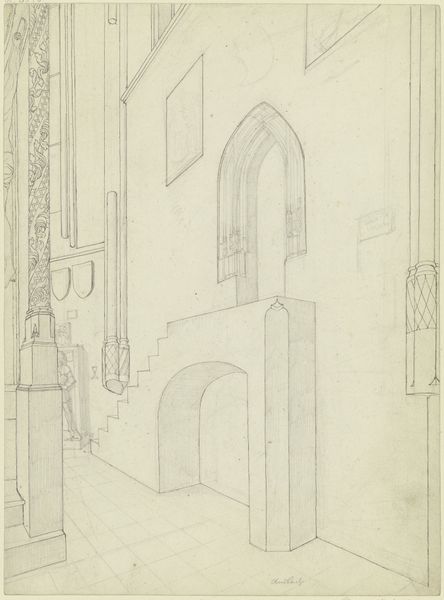
drawing, paper, architecture
#
drawing
#
paper
#
geometric
#
architecture
Copyright: Public Domain
Editor: Here we have "Ogival passage," a drawing on paper attributed to Karl Ballenberger, housed right here at the Städel Museum. The sketch focuses on a set of geometric arches, and the muted grey tones create a sense of serenity. How do you interpret this work? Curator: It's interesting how the artist chose the ogival arch. Historically, these arches emerged during the Gothic period, a time of intense religious and social upheaval. Consider the weight of that history—the Crusades, the rise of powerful church institutions, deeply entrenched social hierarchies. Editor: So you’re saying that the architecture itself can speak to certain social issues of its time? Curator: Absolutely! The ogival arch wasn't just a structural innovation, but a symbol. Its pointed form directs the eye upwards, mirroring the intense focus on the divine that was being propagated by the church at that time, almost silencing dissent. Even here, rendered simply as a drawing, one feels the weight of expectation inherent in the architecture. The "passage," in particular, makes me consider who or what is allowed, or disallowed, through its narrow gate. Editor: I hadn’t thought about it that way. It’s more than just a pretty arch; it's a remnant of an older order and offers a powerful perspective through that architectural lens. Curator: Precisely! And considering Ballenberger’s historical context, what sociopolitical movements could they be responding to by highlighting such a loaded architectural structure? It could be the quietest form of activism. Editor: Thanks. I am definitely looking at this drawing with new eyes!
Comments
No comments
Be the first to comment and join the conversation on the ultimate creative platform.
